© Erik Samwel and Ginette Mayas Samwel
![]()
Ginette and Erik had a short trip to Peru from August 24 to September 4, 2005.
This page gives an overview of our experience there and shows some of the things we saw. We also created two slide shows with more pictures and music:
| Cusco and Machu Picchu slide show | |
| Manu Biosphere slide show |
The first time you try to see one of these slide shows, your web browser will have to download a plug-in (from Photodex) to view the slide shows. These slide shows are quite large, only try to open them if you have a high speed internet connection. The slide shows cover the same as this page only in more detail and a nicer way.
In the text below you can click on some of the pictures to see a larger picture.
![]()
Peru is a large country, approximately 1.28 millions square kilometers, 31 times as large as the Netherlands or just slightly smaller than France, Spain and Italy combined. Peru has approximately 28 million inhabitants. For more statistics, see for example http://www.cia.gov/cia/publications/factbook/geos/pe.html or http://en.wikipedia.org/wiki/Peru.
One thing that is unique about Peru is the large variety in eco systems. According to a tour guide Peru has the largest variety of Eco systems of any country. The terrain also varies widely, from for example some flat coastal areas and the more or less flat rain forest to the snow covered Andes, which reach as high as 6768 meters above sea level.
Because we had only a very short time, we restricted our vacation to the area around Cusco, including the sacred Valley (of the Inca's), Machu Picchu and the Manu Reserve Biosphere. This area is highlighted on the map below.
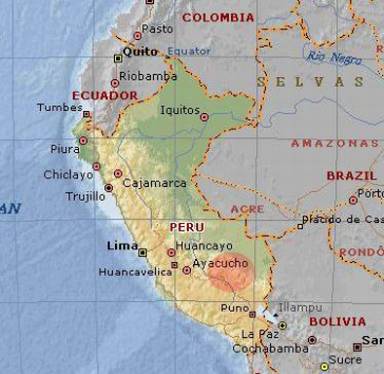
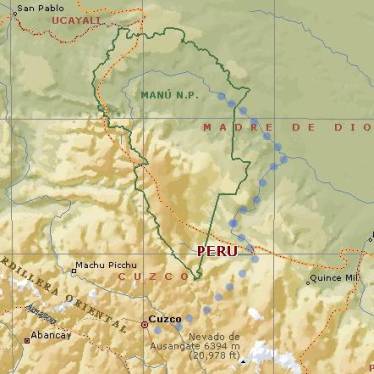
The map on the right shows Cuzco (locally known as Cusco), Machu Picchu and the river we traveled on though the jungle (dots on the map).
![]()
Cusco used to be the capital of the Inca territory. (Cusco means Navel in the Quechua language). When the Spanish invaded in 1533, they destroyed pretty much everything and in an effort to convert the people to Catholicism, they built all their cathedrals on top of the ruins of Inca temples. Cusco is at an altitude of approximately 3000 meter (10,000 feet).
Below you see a 270 deg view of the big square in Cusco.
 (click on the picture to get a larger view)
(click on the picture to get a larger view)
The Cathedrals:
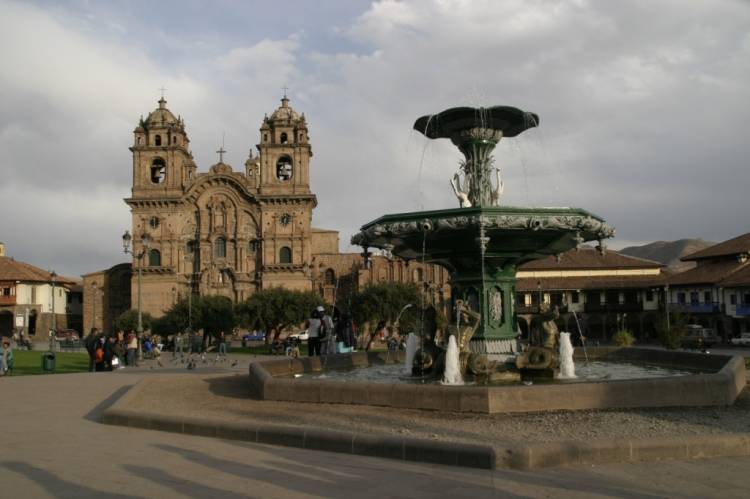
In the hills above Cusco, you will find the Sachsaywaman site.
In Cusco we have a very nice hotel, with beautiful rooms and very nice architecture.
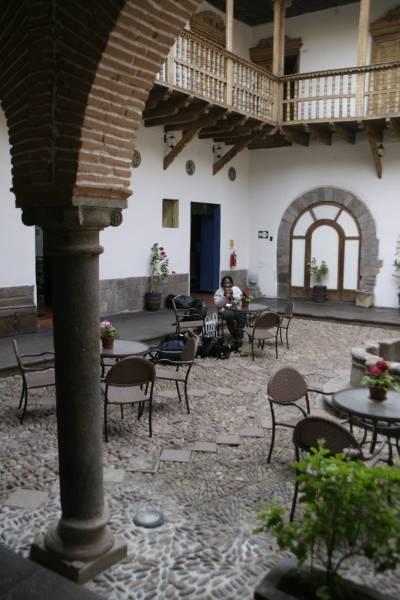
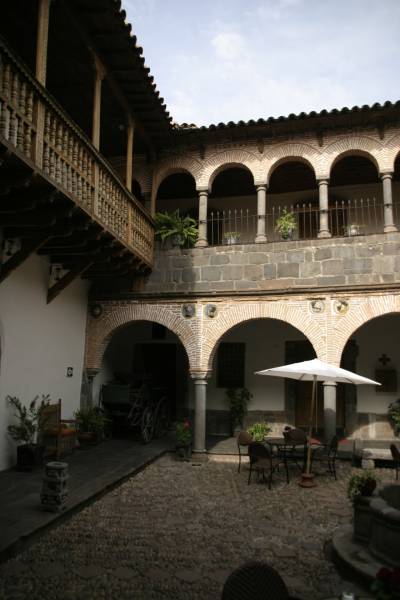
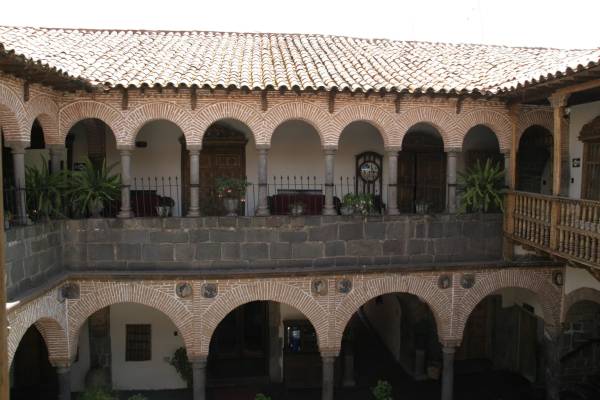
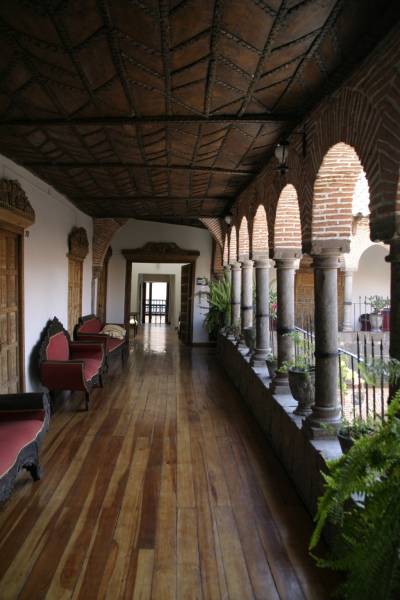
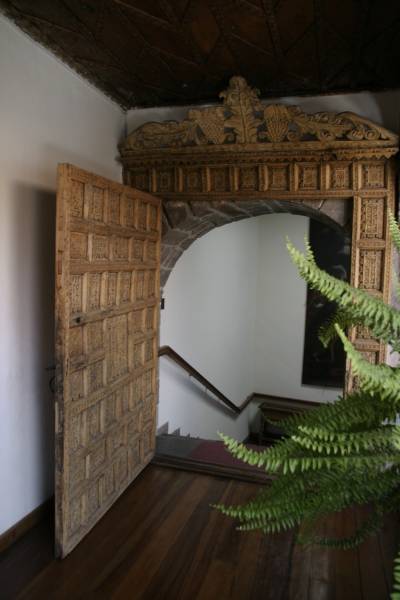
At night, during dinner, there was always some band playing music and dancing:
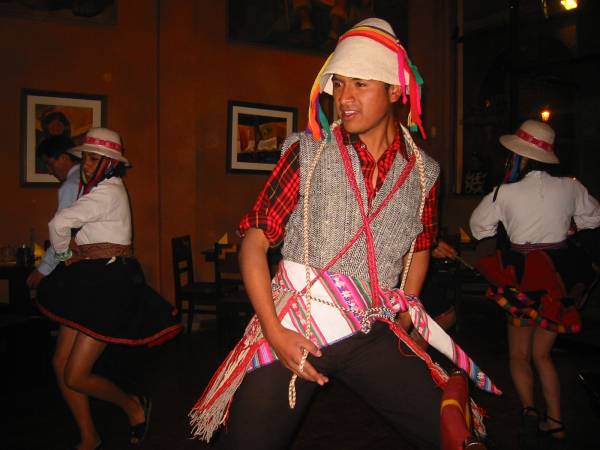
(click on the picture to see a video).
We did not have the opportunity to try out all local delicacies:
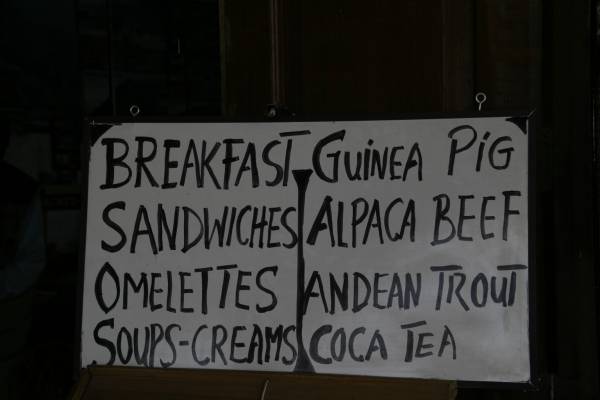
One thing that was also obvious is that this is a country where there is still a lot of poverty,
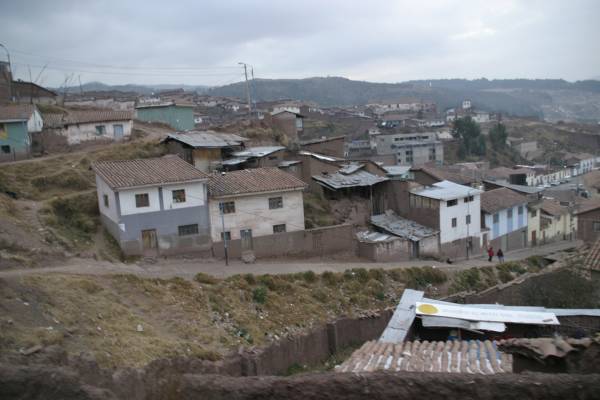
with lots of people begging or trying to sell you something.
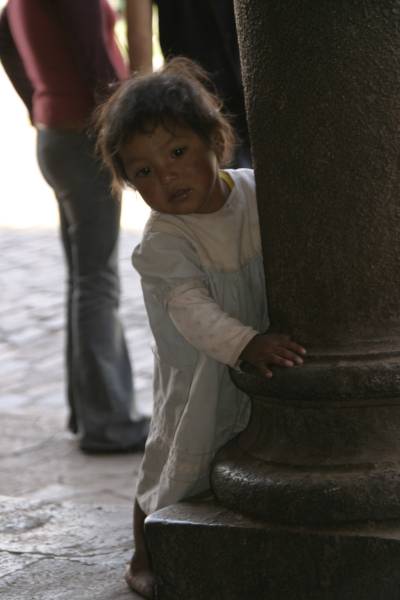
At tourist sites you also always saw kids trying to pose for money.
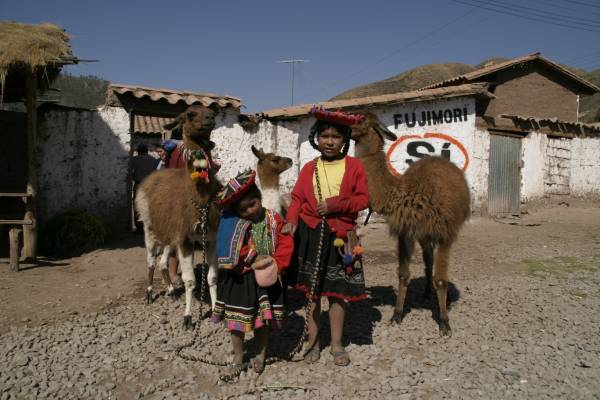
(also note the political sign for Fujimori in the background)
Mostly because the stones were too heavy for the Spanish to move, this site is mostly intact.
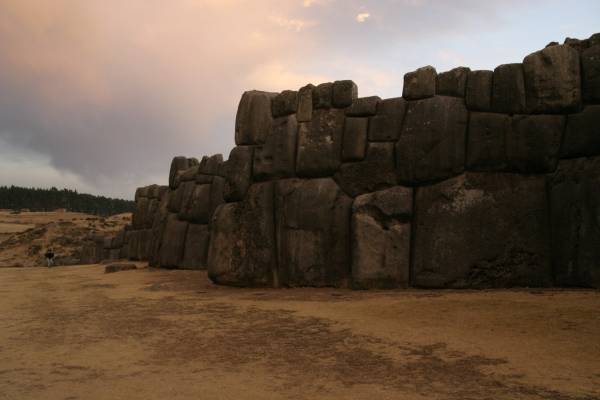
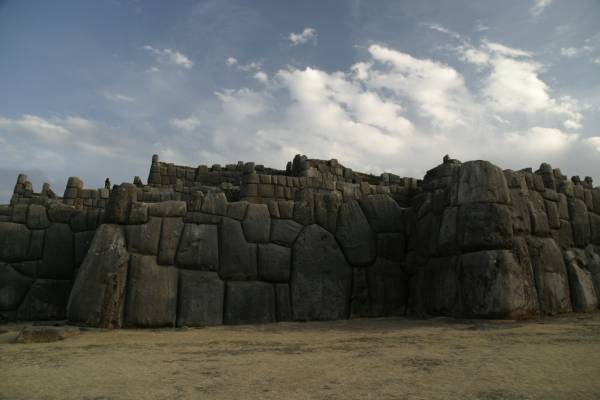
These stones were cut with stone tools and shaped to exactly fit on top of each other. They fit so perfectly that no mortar is needed.
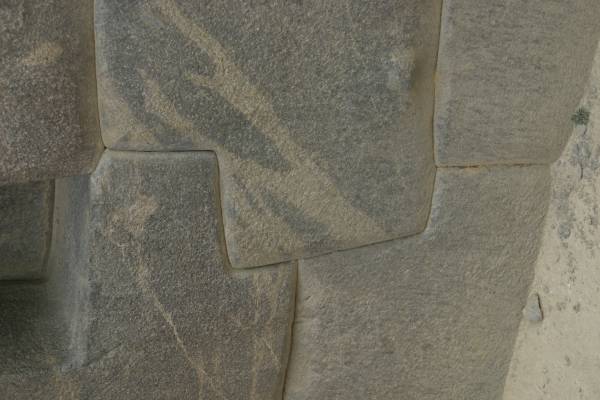
Also, stones have grooves that fall into each other, making these constructions stand up to the big earthquakes that regularly hit the region:
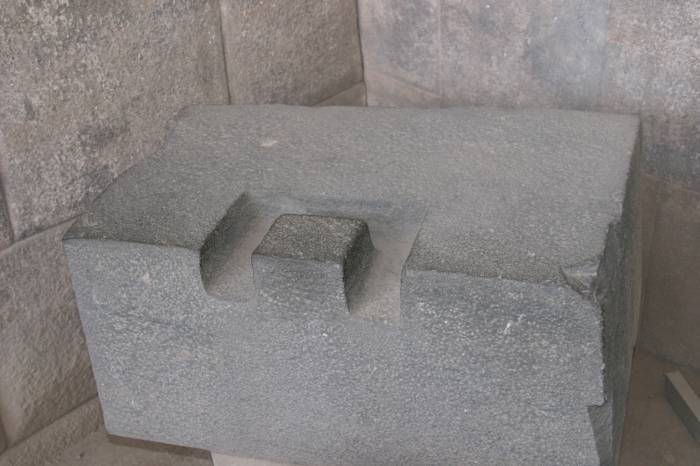
On a tour of the sacred valley, we visited both the modern day Pisac, with it's market:
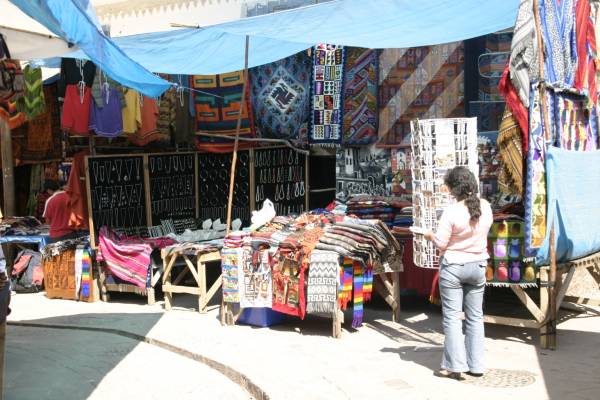
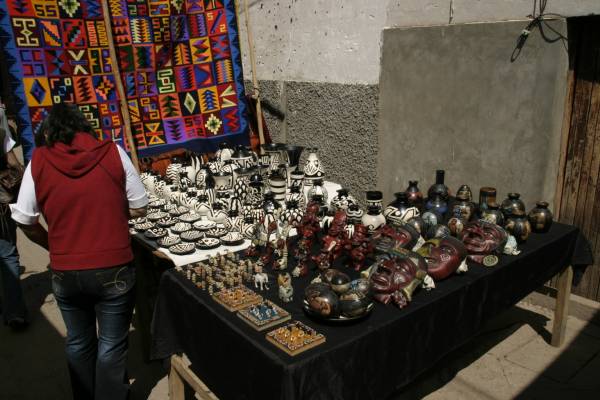
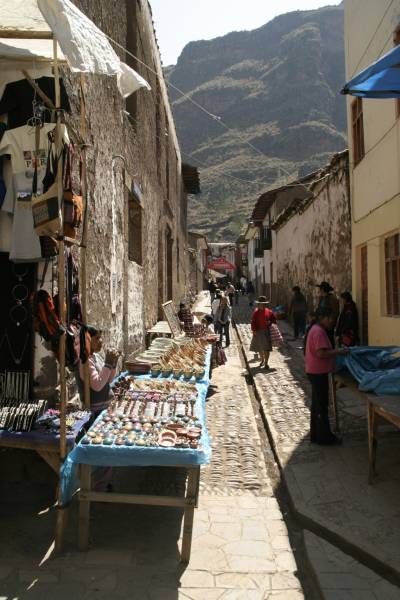 Note the high mountains
in the background.
Note the high mountains
in the background.
We also visited the ruins of the old Pisac. Terraces are used for agriculture, to prevent erosion.
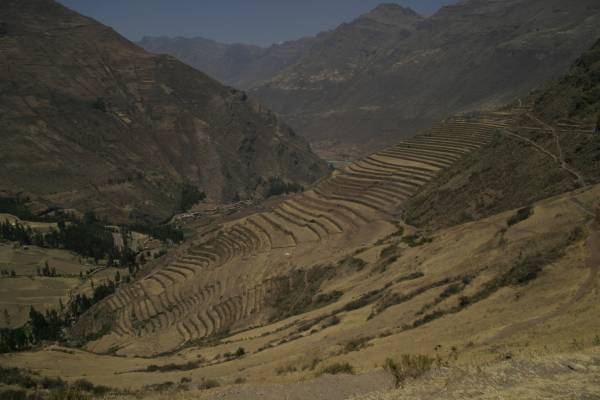
Note the difference is the building style of a temple:
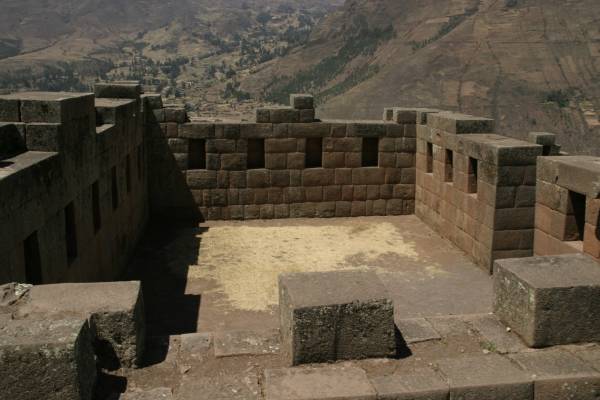
and a house:
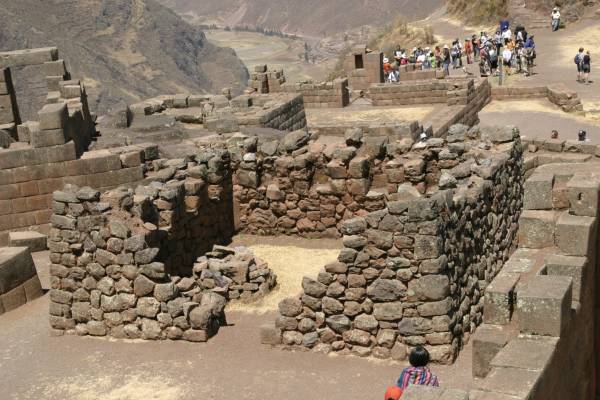
Roofs are always missing because they were made of straw.
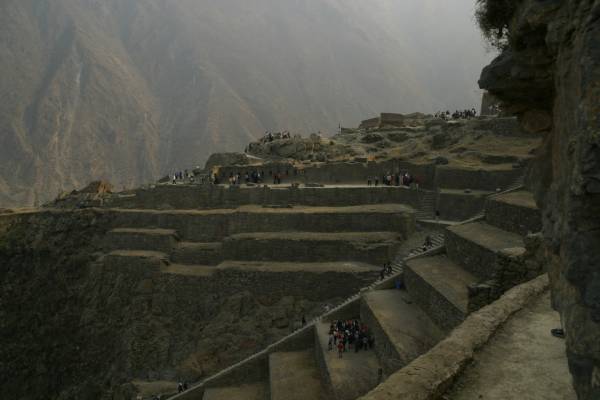
In the picture above, the sun temple is in the upper right corner.
During winter solstice (June 21st), the sun rises through the eye in the face of "god" constructed on the mountain on the other side of the valley:
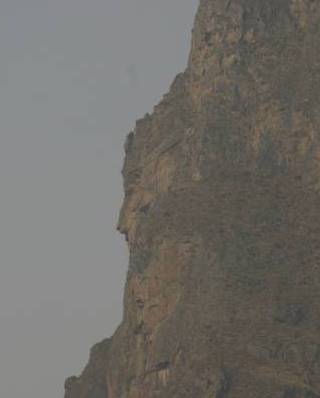 The eye is more or
less in the middle of the picture, above the nose.
The eye is more or
less in the middle of the picture, above the nose.
On the same mountain they carved another face of god as well:
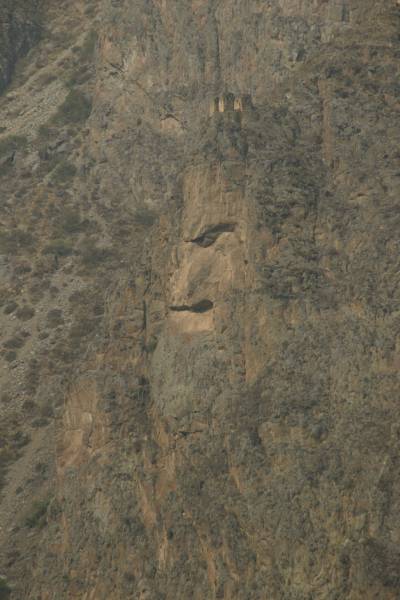
Note the watchtower on top of the head.
![]()
The highlight of the historical part of our vacation was obviously the visit to Machu Picchu. Because we booked late and had only a limited amount of time, we didn't walk to Machu Picchu along the Inca trail, as several hundred people do every day, we took the train.
Machu Picchu is truly impressive. Because the Spanish never discovered it, it is almost completely intact. Located on the top of one of the lower mountains, it overlooks valleys on two sides. The view is spectacular. Machu Picchu was inhabited mostly by priests, scientists and some rulers, the regular population lived in the valley and on other hill slopes where they lived mostly of agriculture.
(click on the picture above to get a lager view)
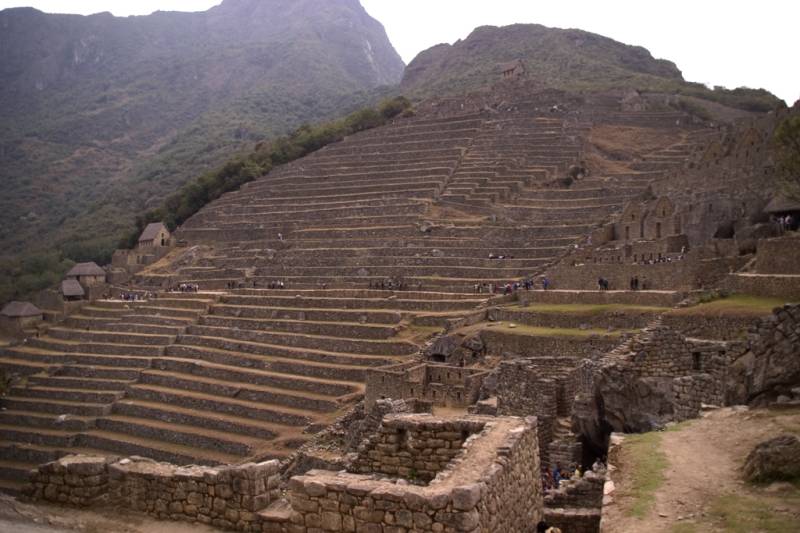
The mountain behind the ruins above, in the upper left corner, is the high peak, or in Quechua language: Machu Picchu.
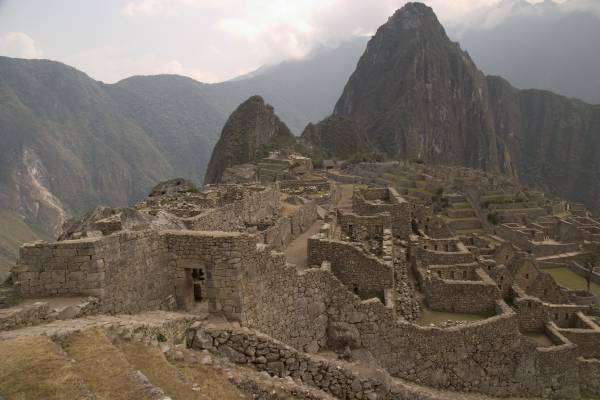
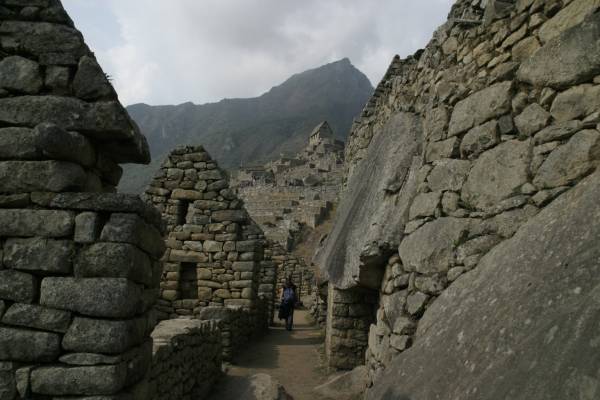
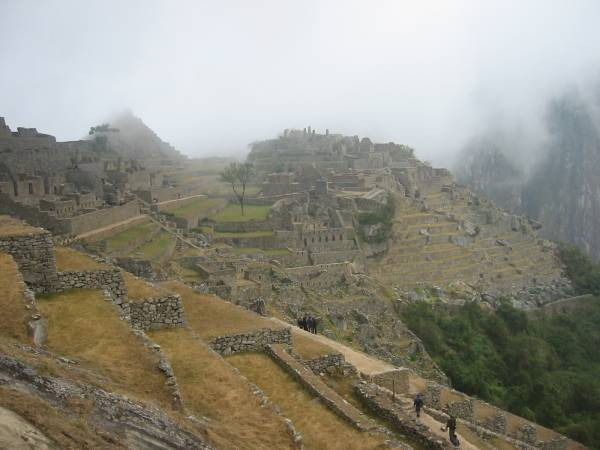
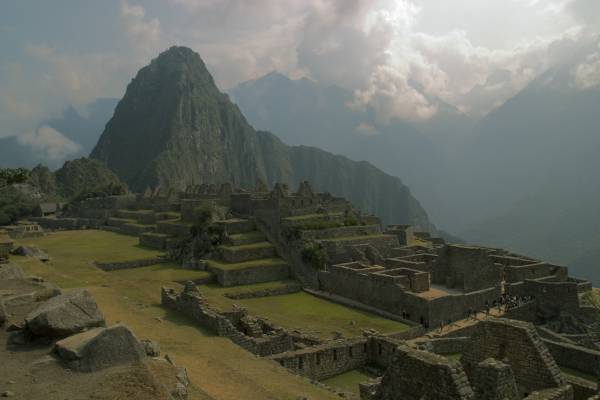
The peak in the background is called Wayna Picchu (lower peak). One can climb this peak, it is very steep but the view from the top down to the ruins is beautiful.
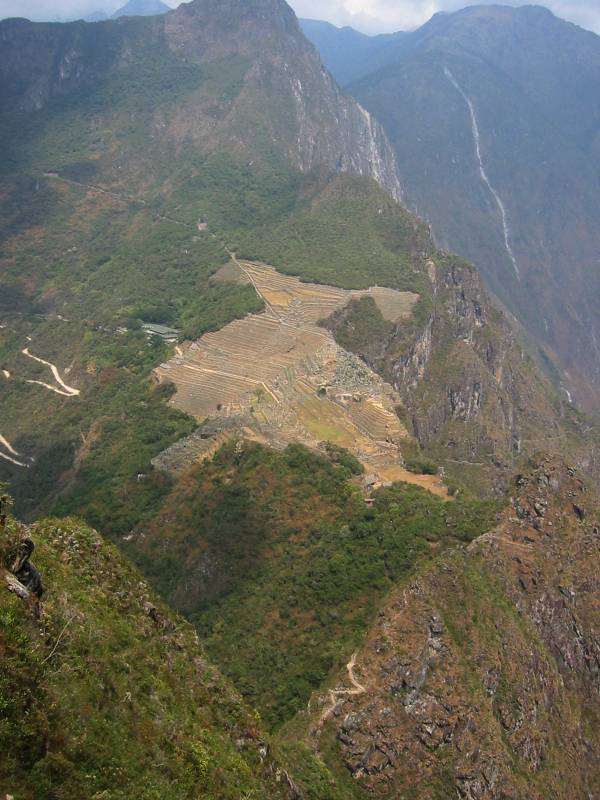
Not a good place if you have vertigo.
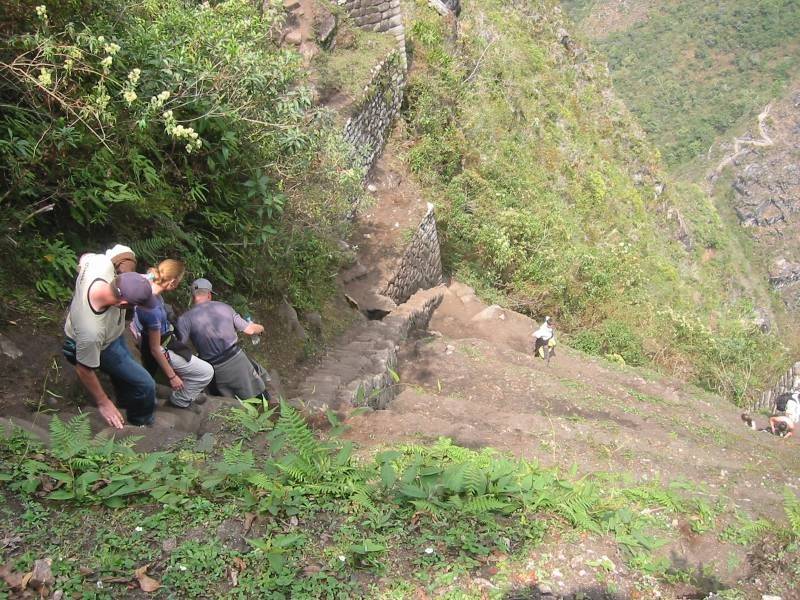
We stayed in a very nice hotel near Machu Picchu, the Machu Picchu Pueblo hotel. Very expensive but absolutely wonderful.
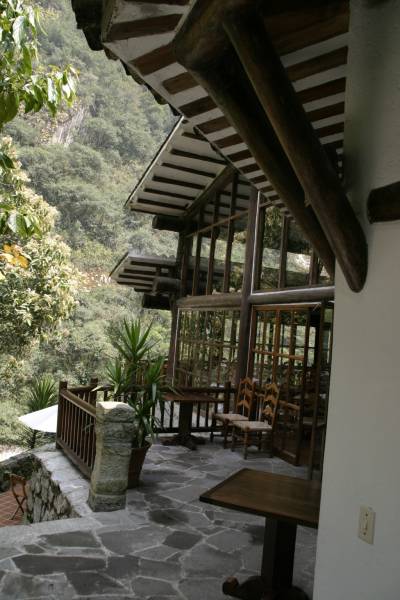
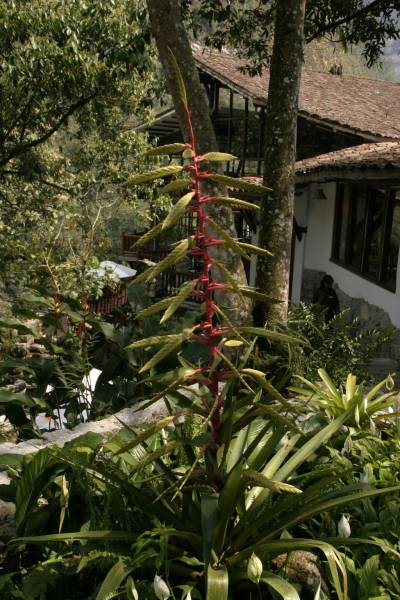
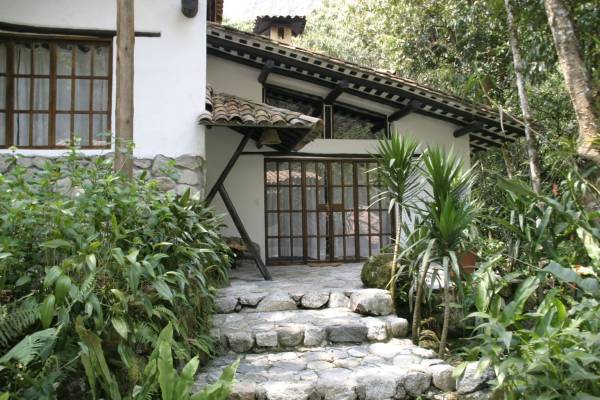
The hotel lies in the cloud forest (jungle) below Machu Picchu. It has a beautiful garden with 372 species of Orchids and a large variety of birds.
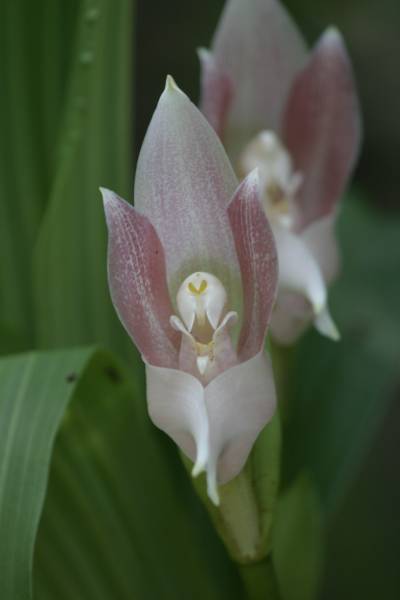
Including 10 different types of humming birds.
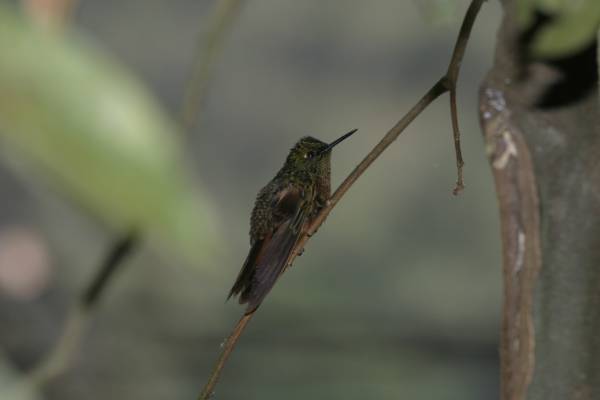
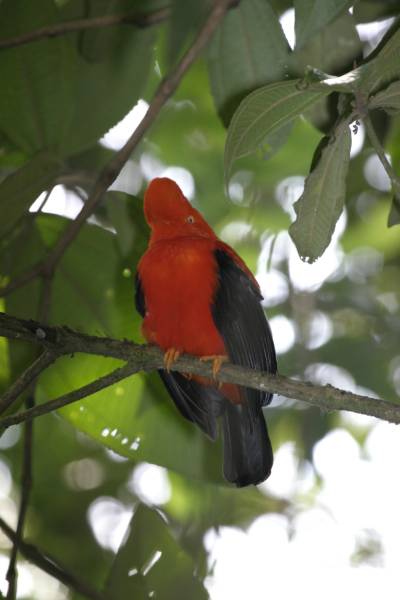
The national bird of Peru, the cock of the rock.
On the way back to Machu Picchu, in the train we got a fashion show with clothing made of alpaca wool.
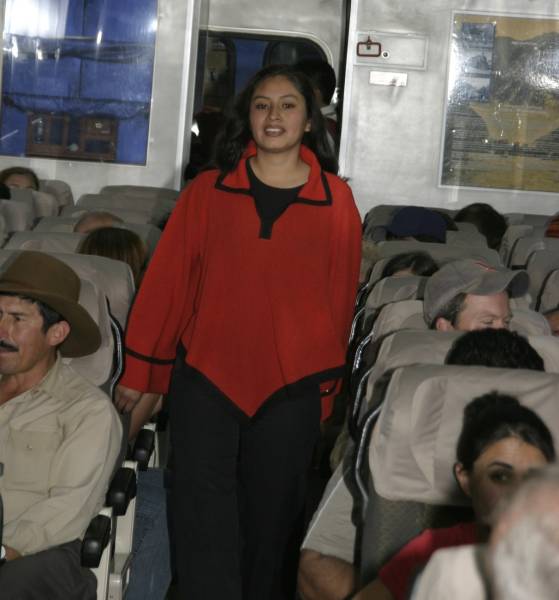
![]()
![]()
Manu National park consists of 3 zones, one zone that is accessible to tourists (with appropriate permits and guided by licensed tour guides), one zone with access only to scientists and one zone where nobody is permitted. We obviously traveled into the tourist zone, along the Manu river.
To get to the river, we first had to travel a few hundred km along some dirt roads.
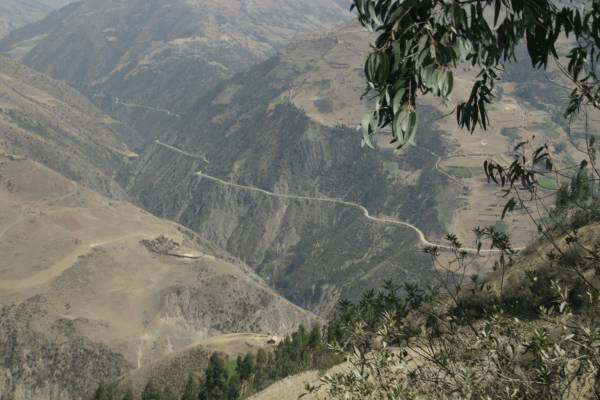
Our truck:
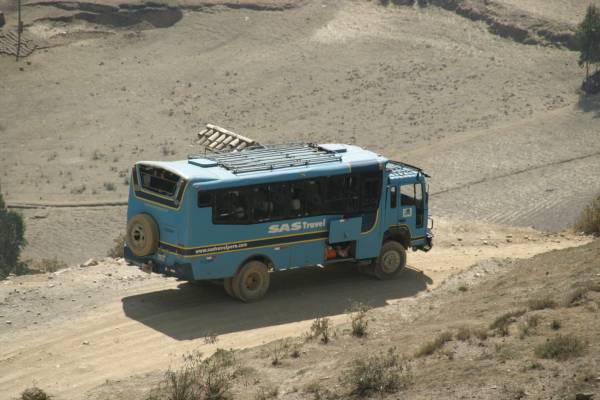
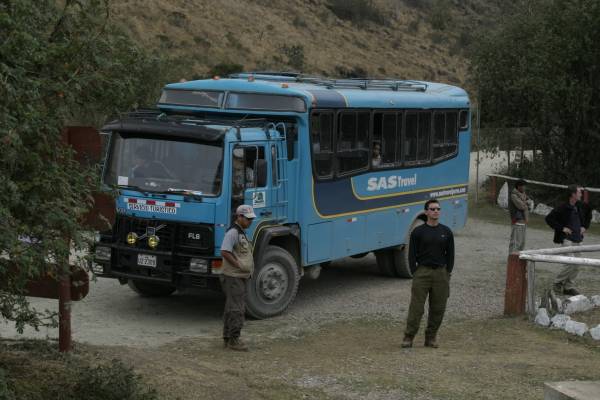
On the way we passed through some small villages and burying grounds
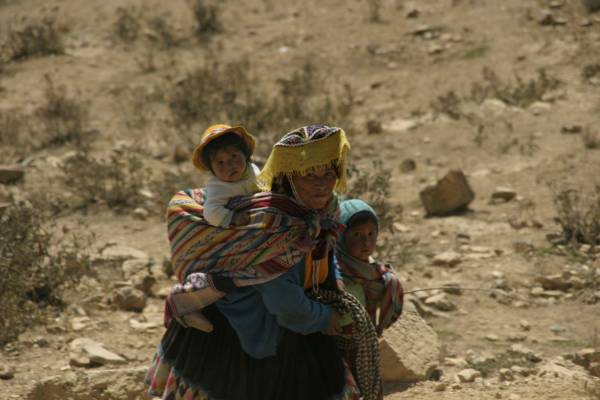
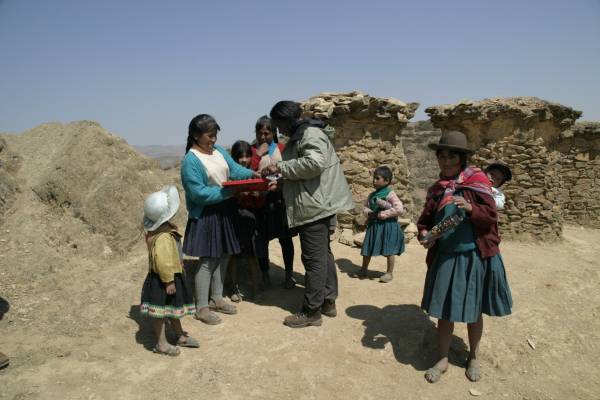
Once we had crossed the mountains, we could see the river:
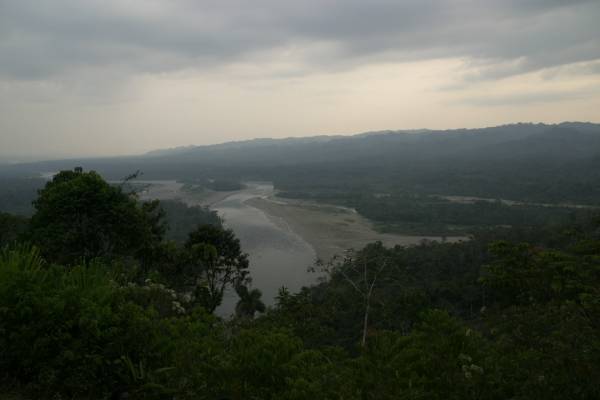
Since there are no roads in the jungle, all travel was by boat.
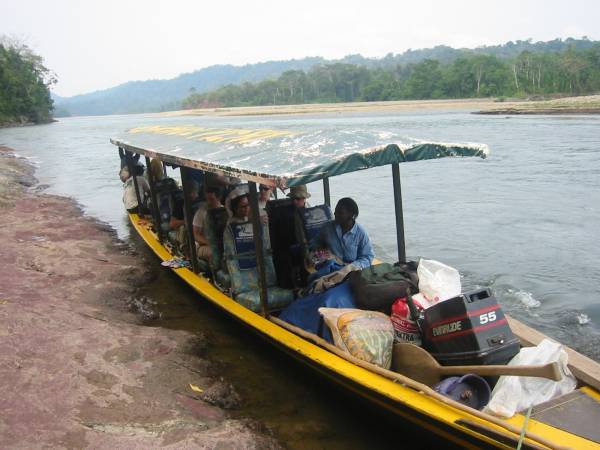
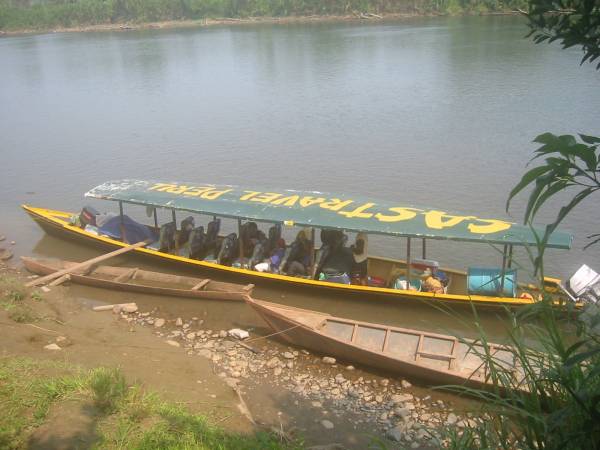
Most of this jungle trip we spent on the river, we ate our lunches there:
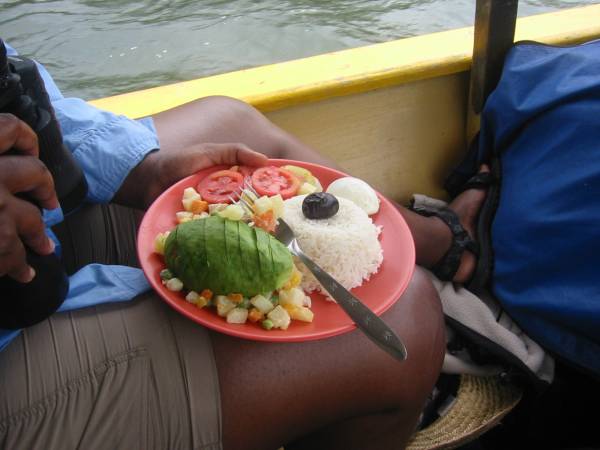
and we saw lots of birds:
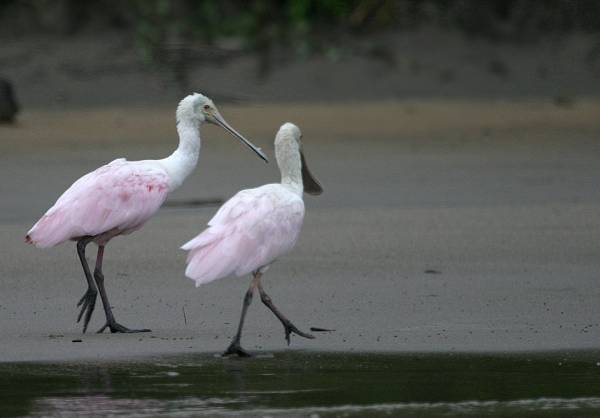
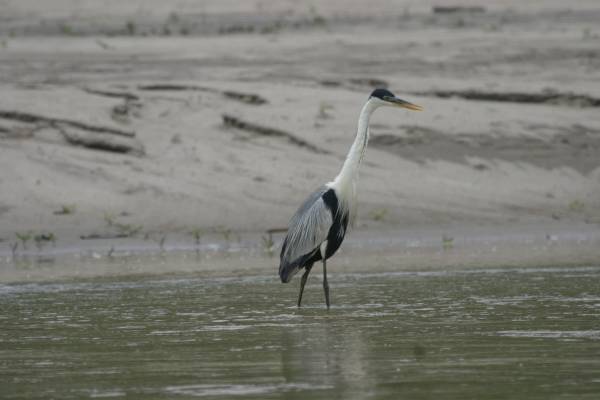
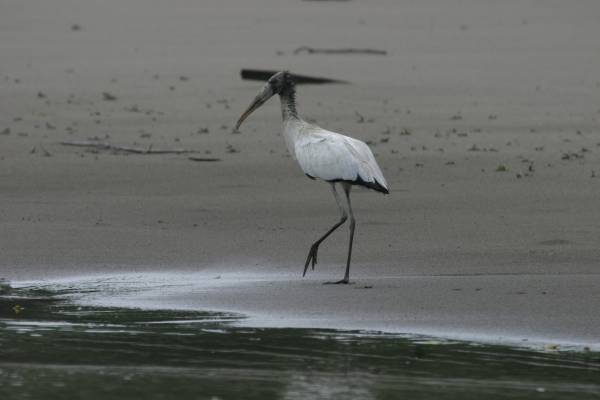
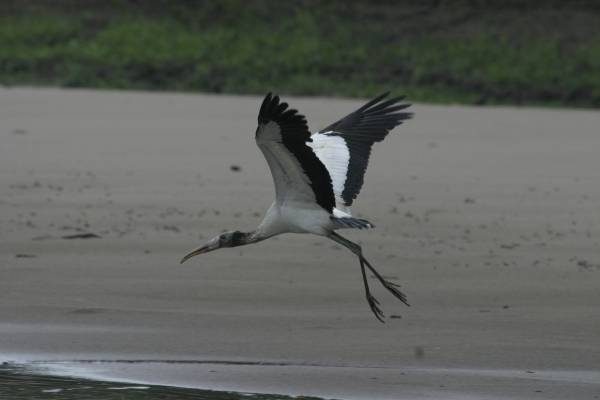
We also saw capybara, the worlds largest rodent
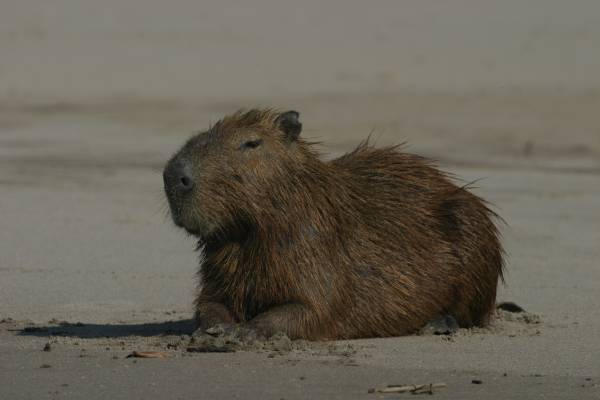
and both black and white Cayman crocodiles.
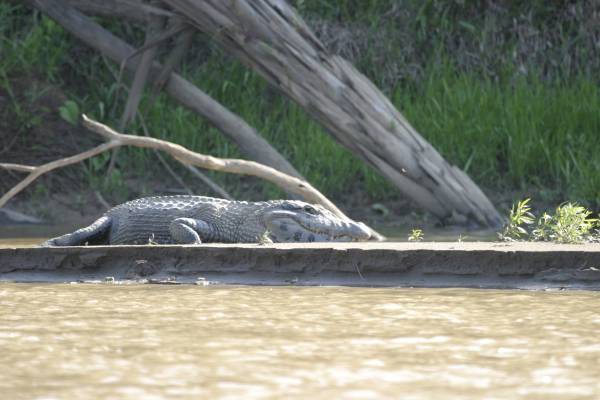
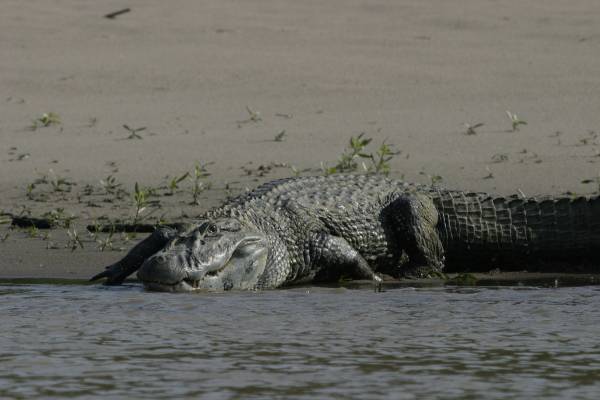
a white cayman:
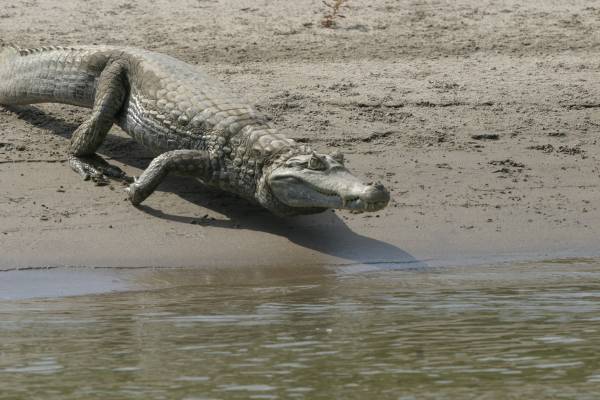
When we went on a little secluded lake, we saw some more gorgeous birds, like the green heron:
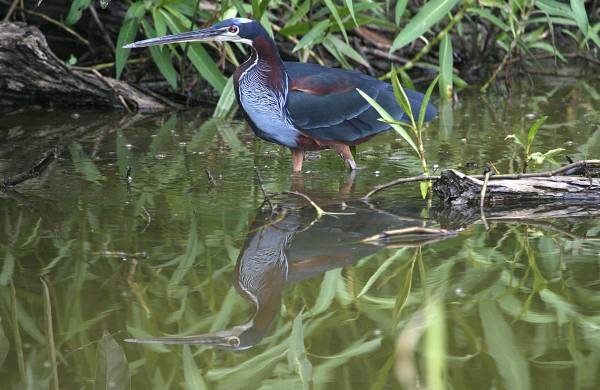
many cormorants:
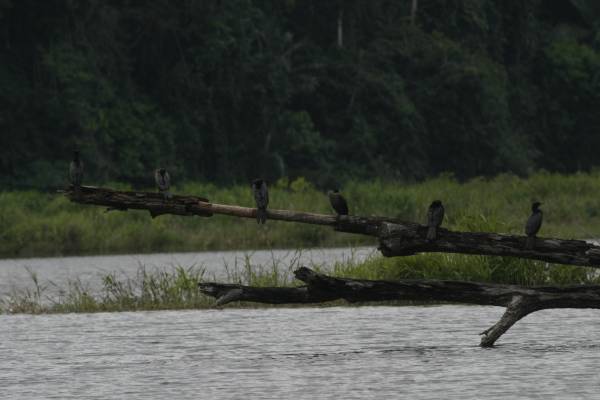
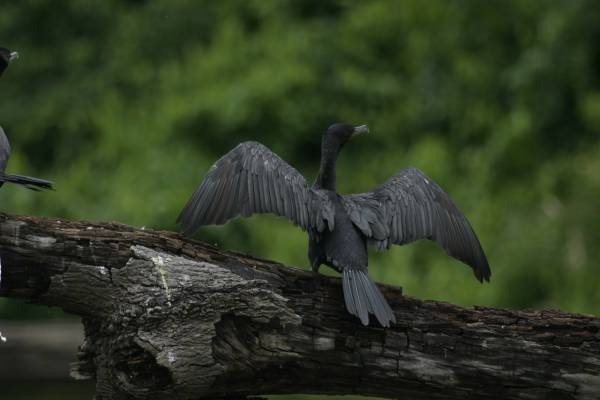
egrets:
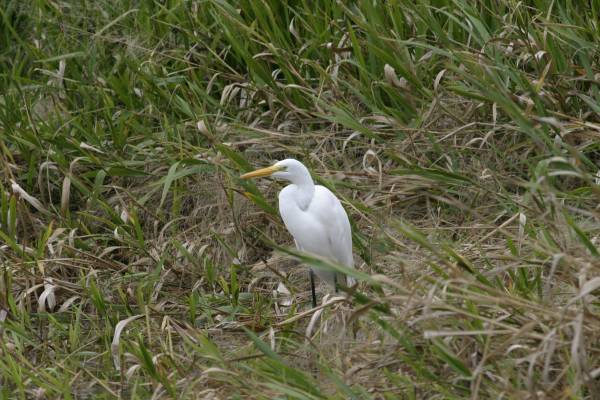
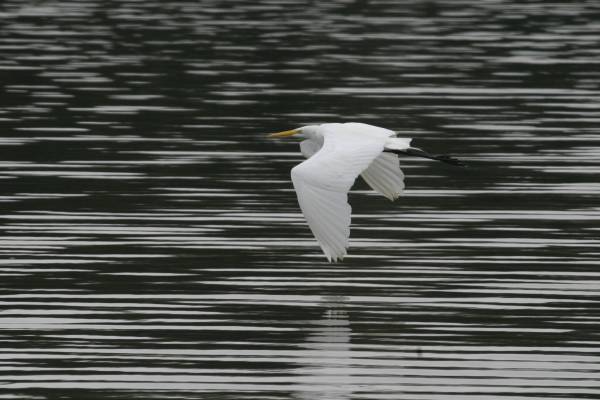
we also saw some very unique birds, the hoatzin or stinkbird, of which the young have claws on the first and second wind digits that they use to climb trees. These birds are somewhat reminiscent of the Archaeopteryx although the direct evolutionary link to this dinosaur bird is debated. It solely eats leaves and to digest these, it has multiple stomachs, like a cow. This is also the reason this bird stinks.
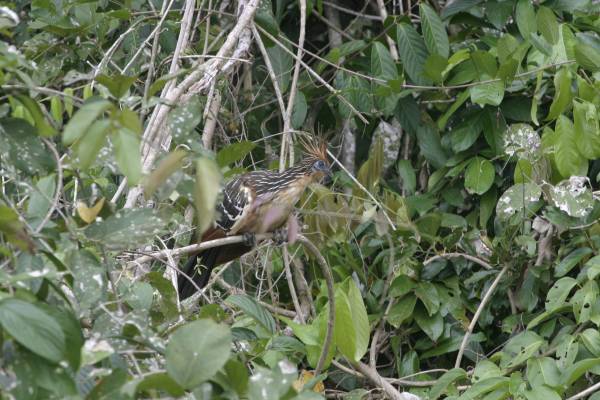
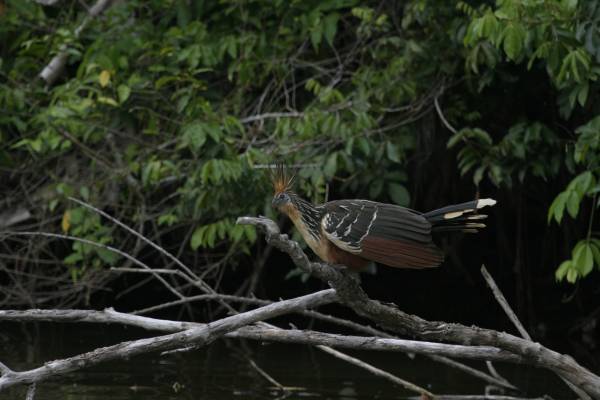
but the most spectacular were the giant otters. These creatures can get up to 6 feet (1.8 m) long and are the biggest otter species. Sadly they have become extremely rare. There are only a few hundred of these otters left in the Manu reserve. and only 1000-5000 in total. We saw two families of approximately 10 (unless we saw the same family twice).
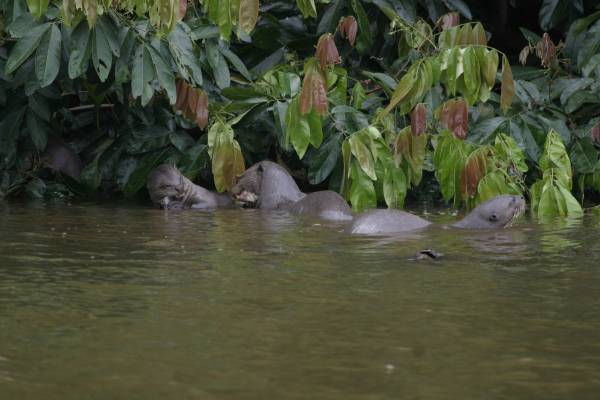
They have a ferocious appetite, eating several kilos of fish every day.
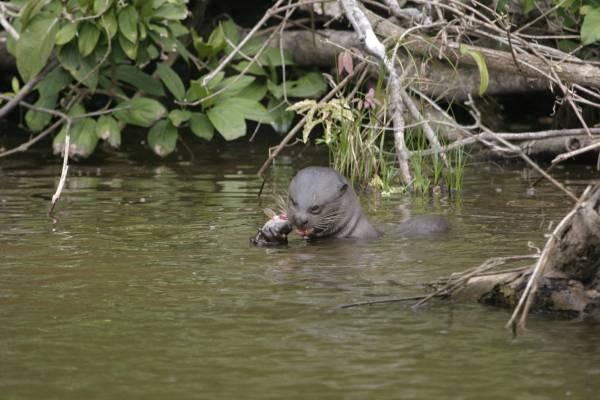
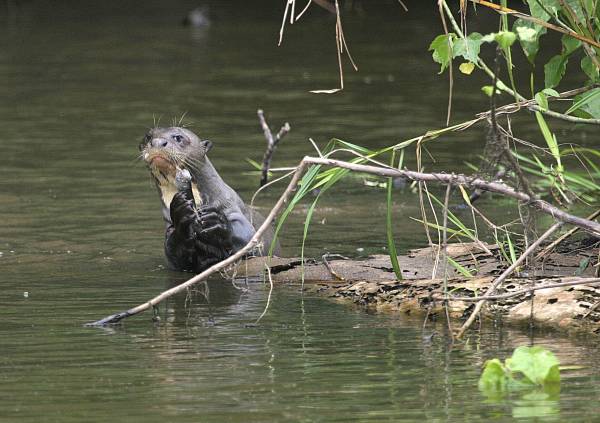
At night we stayed in camps in nice huts:
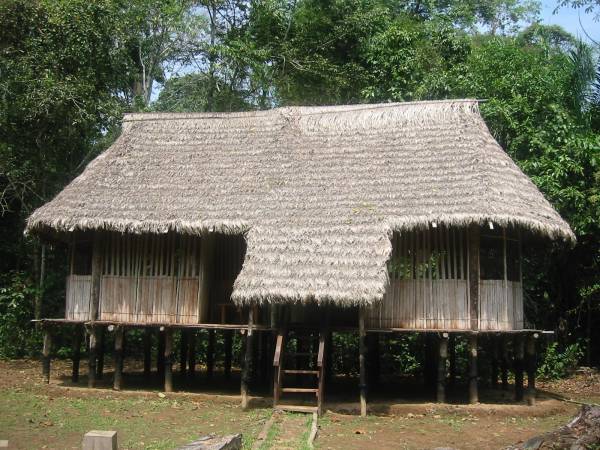
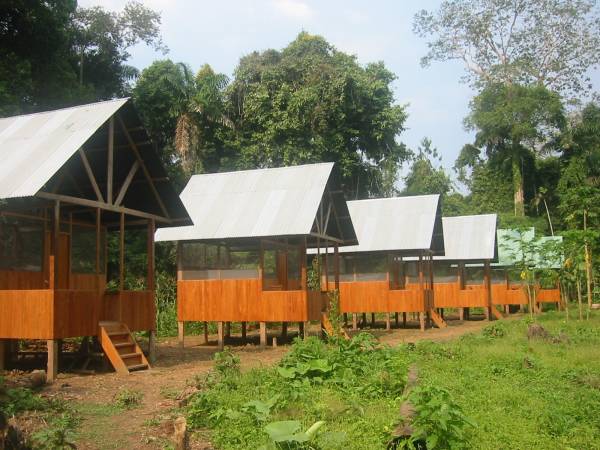
Around the camps there usually were some walking trails where you got an impression of how big trees can get in the jungle:
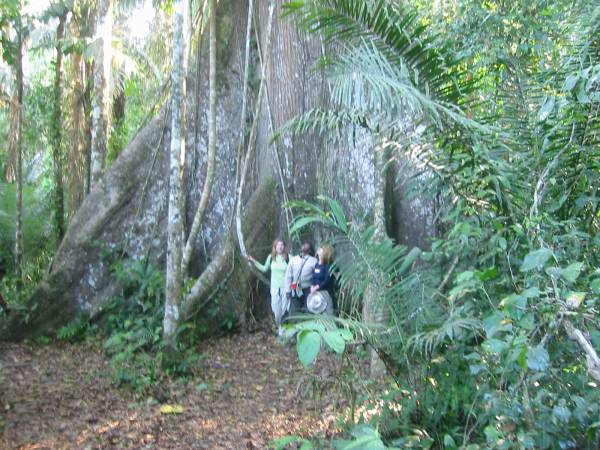
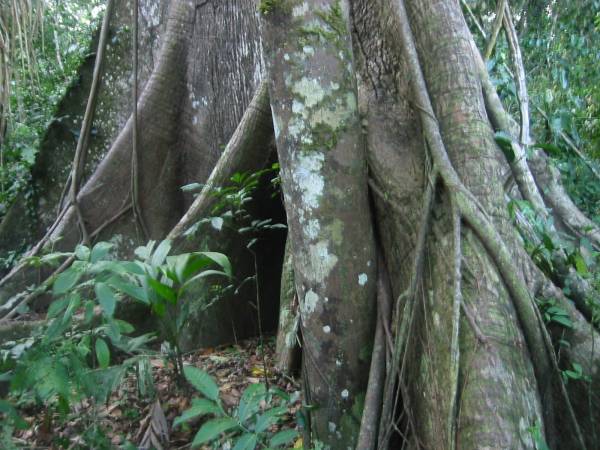
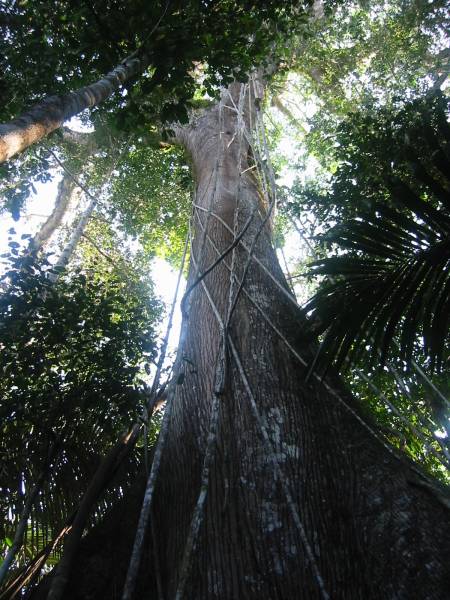
The root systems of some of the plants were spectacular:
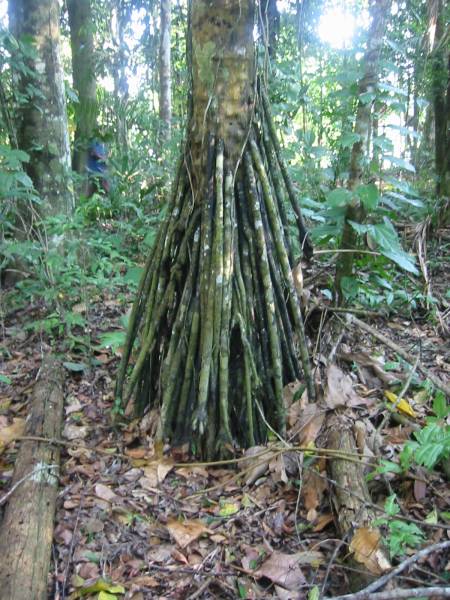
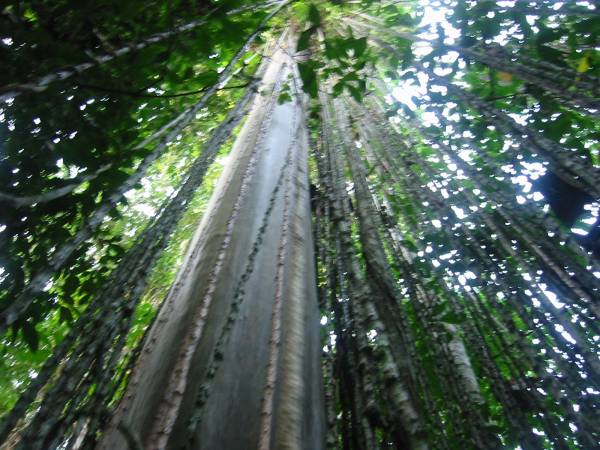
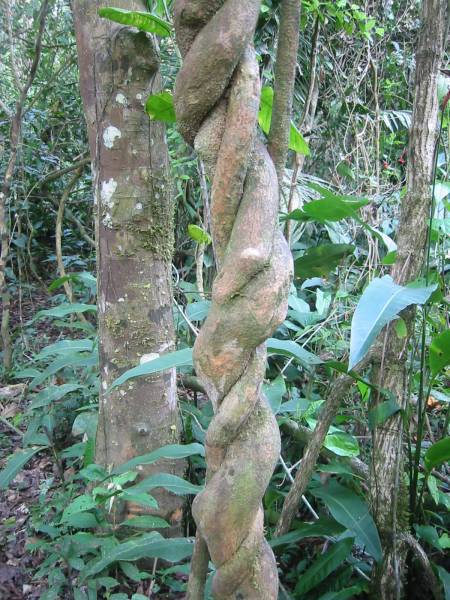
In the jungle we saw a few monkeys:
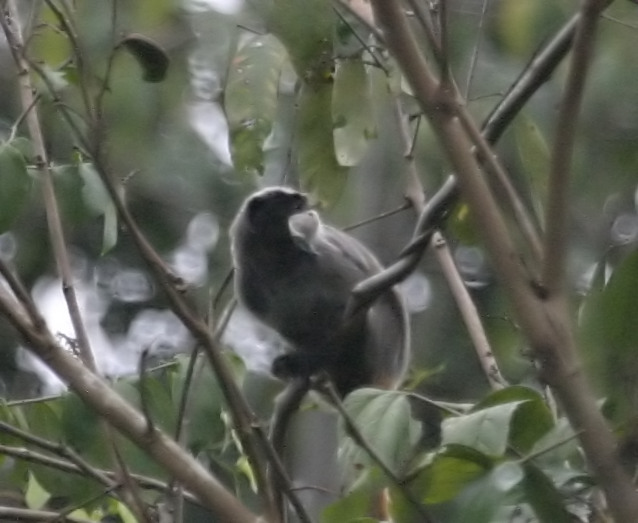
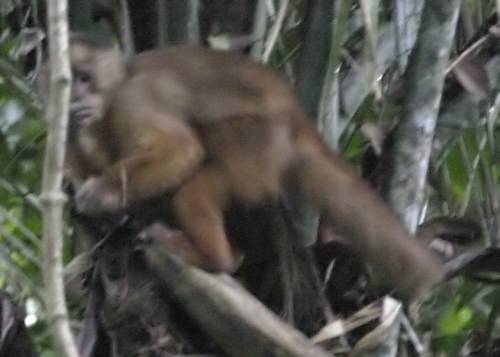
We also saw strange insects such as this scorpion spider:
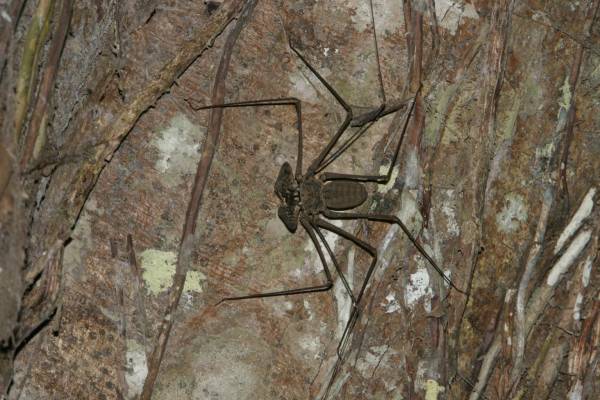
Because the airplane that was supposed to take us back out of the jungle, the way back was quite an adventure, where we first traveled for 10 hours by a small boat,
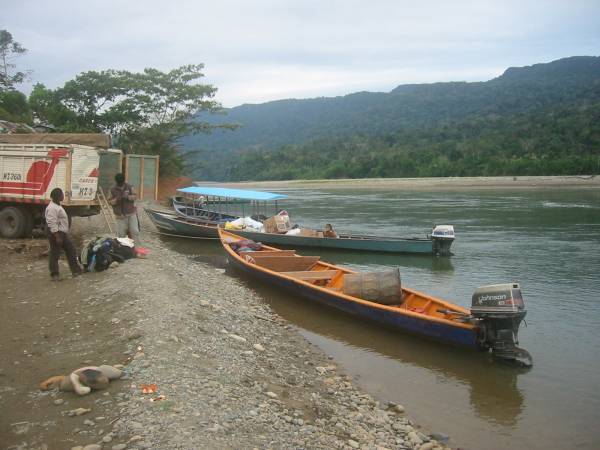
then in the back of a cement truck
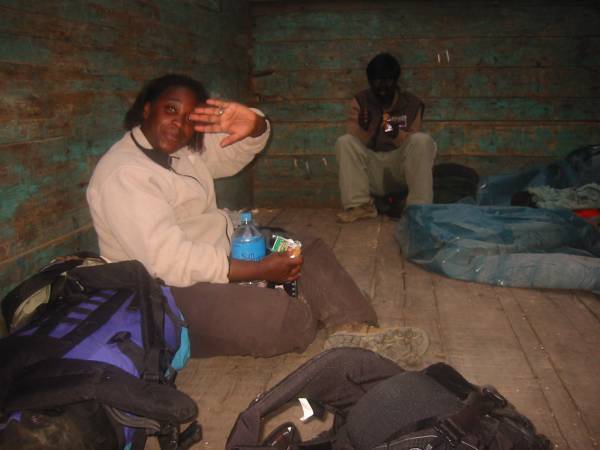
and the last stretch in a small taxi, that took us across the mountains. Because the taxi driver was constantly sick and very tired, this ride took almost 11 hours (for 250 km), getting us back in Cusco only 15 minutes before our nplane back departed. All in all a very nice and interesting adventure.